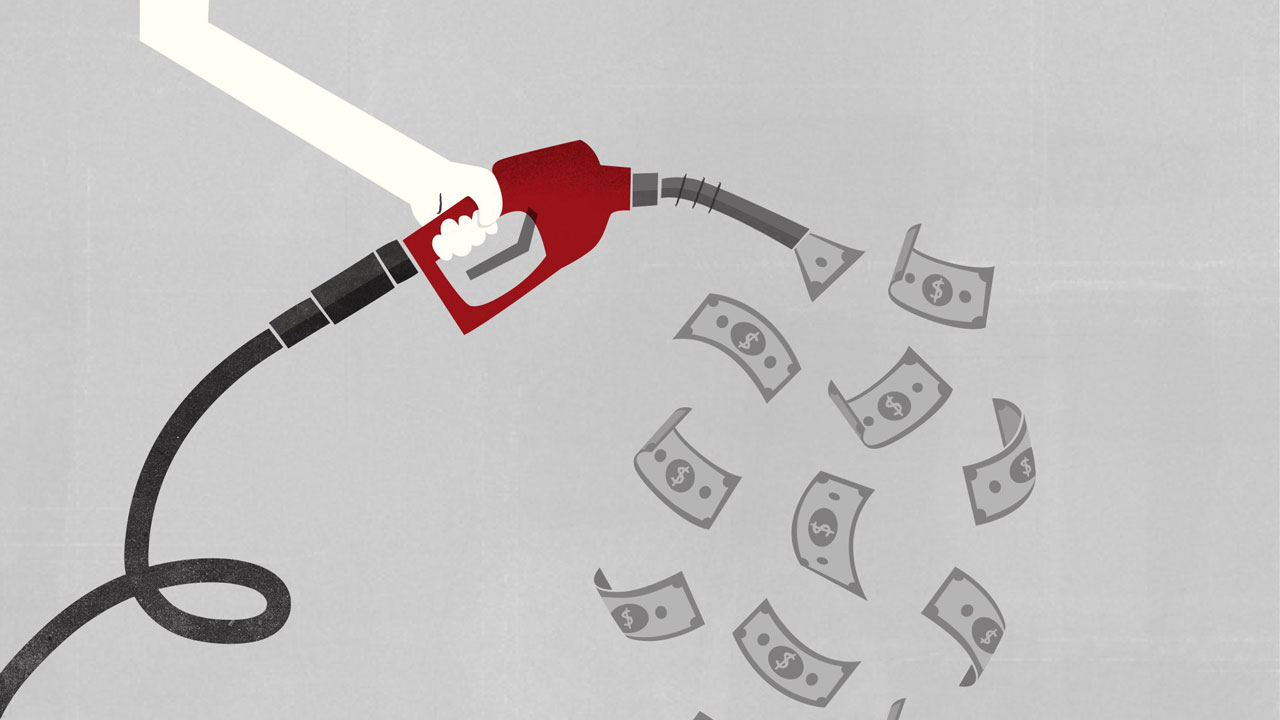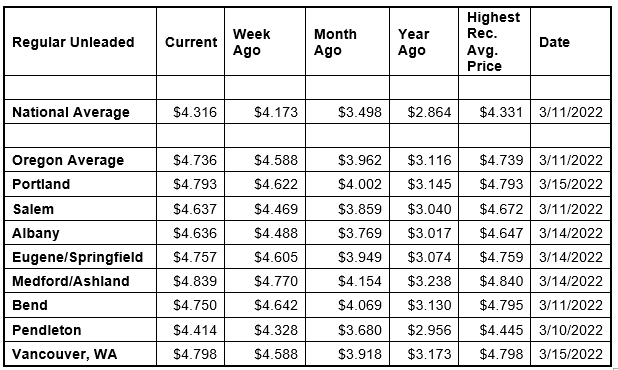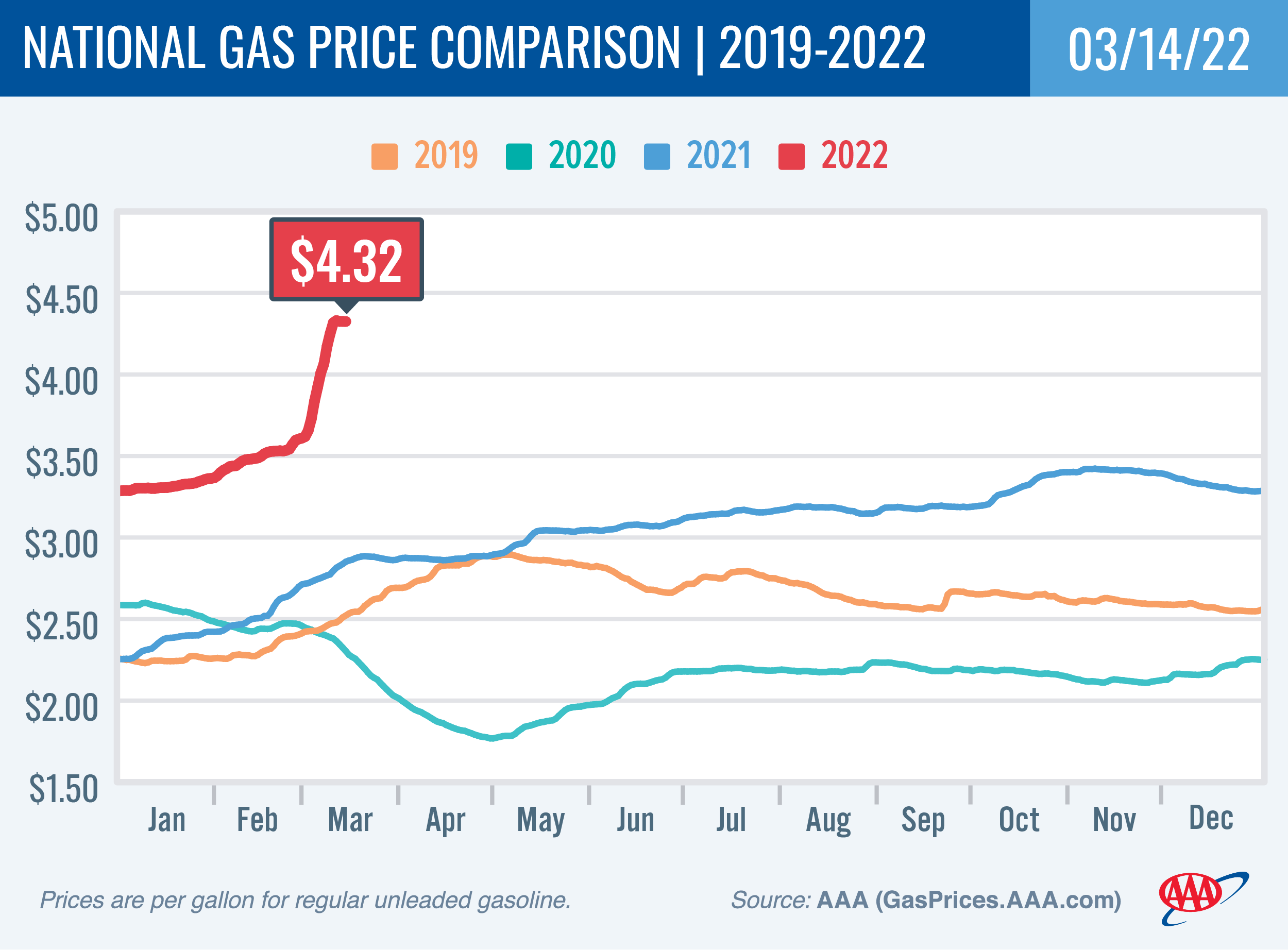AAA: Falling oil prices have put the brakes on surging Oregon gas prices — for now

Bend's average price hits $4.75 a gallon -- Medford at $4.839
PORTLAND, Ore. (KTVZ) – After cresting above $123 per barrel shortly after Russia’s invasion of Ukraine, the price of crude oil has gradually fallen below $100 per barrel. If this trend holds, it may reduce some of the extreme upward price pressure consumers have found at the pumps, but not all, AAA Oregon/Idaho said Tuesday.
Prices continue to climb in 49 states, but the increases are not as dramatic as they were last week. For the week, the national average for regular adds 14 cents to $4.32. The Oregon average jumps 15 cents to $4.74.

Last week, the national average shot up 54 cents while the Oregon average jumped 55 cents. Both averages are slightly lower than their record highs set last week. The national average peaked at $4.33 on March 11 while the Oregon average peaked at $4.739 on March 11. These prices eclipse the old record highs set in 2008, when the national average peaked at $4.11 on July 17, and the Oregon average peaked at $4.29 on July 3.
“The violent invasion of Ukraine by Russia continues to impact an already tight global crude oil market, making it impossible to predict if pump prices have peaked or will surge again. It all depends on the direction of oil prices,” says Marie Dodds, public affairs director for AAA Oregon/Idaho.
On average, about 53% of what we pay for in a gallon of gasoline is for the price of crude oil,12% is refining, 21% distribution and marketing, and 15% are taxes, according to the U.S. Energy Information Administration.
About 3% of oil, and a total of 8% of oil and refined products used in the U.S. last year came from Russia, while about 25% of Europe’s oil is imported from Russia. The U.S. is the largest oil producer in the world. Other top producers are Saudi Arabia and Russia.
U.S. gasoline demand rose slightly from 8.74 million b/d to 8.96 million b/d. Total domestic gasoline stocks decreased by 1.4 million bbl to 244.6 million bbl last week, according to the U.S. Energy Information Administration (EIA). The increase in gas demand and a reduction in total supply contribute to rising pump prices. But increasing oil prices play the lead role in pushing gas prices higher.
Quick stats
Oregon is one of 49 states and the District of Columbia with higher prices now than a week ago. Utah (+35 cents) has the largest weekly increase. New Jersey (+5 cents) has the smallest. Last week, the increases ranged from 15 to 66 cents. Oregon (+15 cents) has the 17th-largest weekly increase in the nation. Delaware (-3 cents) is the only state with a week-over-week decline.
California ($5.75) is the most expensive state in the nation and is the first state to ever have an average above $5 a gallon. There are 38 states and the District of Columbia with an average at or above $4 a gallon.
The cheapest gas in the nation is in Kansas ($3.81) and Missouri ($3.83). This week no states have averages below $3 a gallon, same as a week ago. For the 62nd week in a row, no state has an average below $2 a gallon.
All 50 states and the District of Columbia have higher prices now than a month ago. The national average is 82 cents more and the Oregon average is 77 cents more than a month ago. This is the 28th– largest monthly increase in the nation. Nevada (+$1.06) has the largest month-over-month increase. Hawaii (+53 cents) has the smallest.
All 50 states and the District of Columbia have higher prices now than a year ago, and all have a current average that’s a dollar or more higher than a year ago. The national average is $1.45 more and the Oregon average is $1.62 more than a year ago. This is the fourth-largest yearly increase in the nation. California (+$1.91) has the biggest yearly increase. Nebraska (+$1.10 cents) has the smallest year-over-year increase.
West Coast
The West Coast region continues to have the most expensive pump prices in the nation with all seven states in the top 10. This is typical for the West Coast as this region tends to consistently have fairly tight supplies, consuming about as much gasoline as is produced.
| Rank | Region | Price on 3/15/22 | ||
| 1 | California | $5.75 | ||
| 2 | Hawaii | $5.00 | ||
| 3 | Nevada | $4.96 | ||
| 4 | Washington | $4.74 | ||
| 5 | Alaska | $4.74 | ||
| 6 | Oregon | $4.74 | ||
| 7 | Arizona | $4.61 | ||
| 8 | Illinois | $4.56 | ||
| 9 | District of Columbia | $4.52 | ||
| 10 | Connecticut | $4.46 |
California is the most expensive state for the 60th week in a row with Hawaii, Nevada, Washington, Alaska, Oregon and Arizona rounding out the top seven. Oregon slips to sixth after two weeks at fourth.
Like the rest of the country, all seven states have weekly increases: Arizona (+32 cents) has the largest in the region while Oregon (+15 cents) has the smallest week-over-week increase in the region.
The refinery utilization rate on the West Coast increased from 79.5% to 81.2% for the week ending March 4. The rate has ranged between about 76% and 88% in the last year.
According to EIA’s latest weekly report, total gas stocks in the region rose slightly from 29.99 million bbl. to 30.12 million bbl.
The upticks in the refinery utilization rate and gasoline stocks should help keep prices from climbing as dramatically in the region this week.
Oil market dynamics
Crude prices surged then eased last week in response to President Biden and other nations announcing a ban of Russian energy imports, including crude oil. Crude prices have eased as the market continues to find replacement barrels of oil and further supply growth for the tight market becomes apparent. However, the market remains volatile and additional disruptions or escalation of the current crisis in Ukraine could cause prices to surge again this week. Additionally, EIA reported that total domestic crude stocks decreased by 1.8 million bbl last week to 411.6 million bbl. The current stock level is approximately 17% lower than at the end of February 2021, contributing to pressure on domestic crude prices.
At the close of Friday’s formal trading session, WTI increased by $3.31 to settle at $109.33. At Monday’s formal trading session, WTI lost $6.32 to close at $103.01. Today crude is trading around $95, compared to $124 a week ago. Crude prices are about $37 more than a year ago.
Drivers can find current gas prices along their route with the free AAA Mobile app for iPhone, iPad and Android. The app can also be used to map a route, find discounts, book a hotel and access AAA roadside assistance. Learn more at AAA.com/mobile.

Diesel
For the week, the national average climbs 36 cents to $5.12 a gallon. Oregon’s average jumps 45 cents to $5.38. Both averages are slightly lower than the record highs reached in the last week. A year ago the national average for diesel was $3.08 and the Oregon average was $3.14.
Find current fuel prices at GasPrices.AAA.com.



